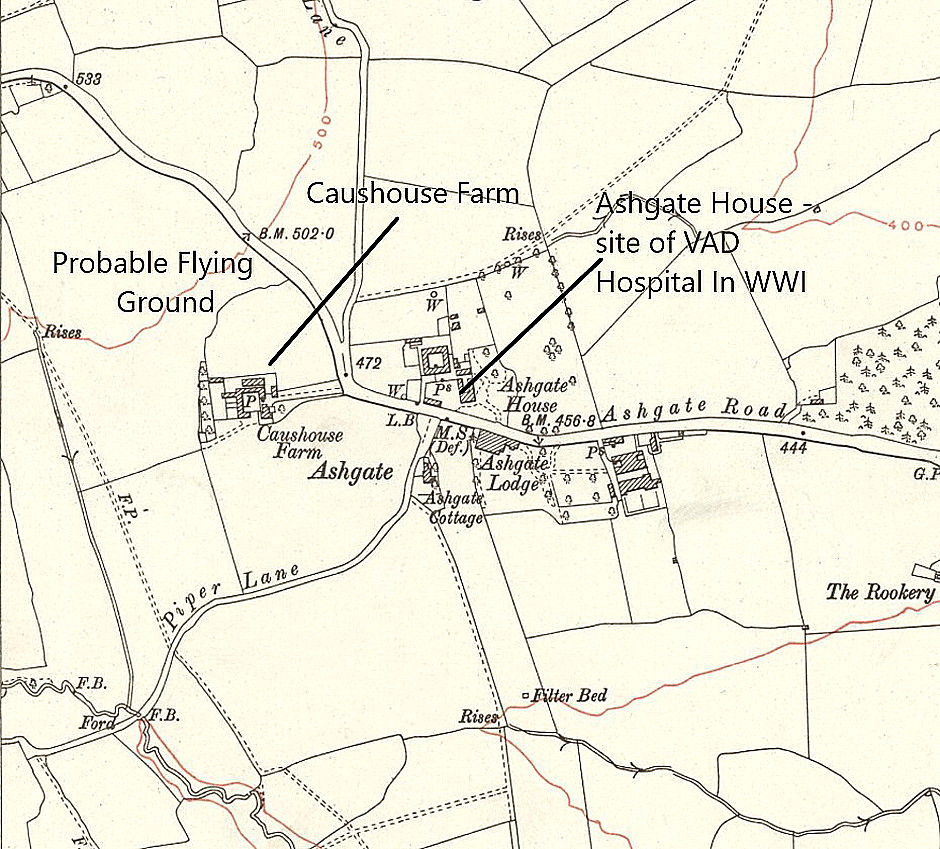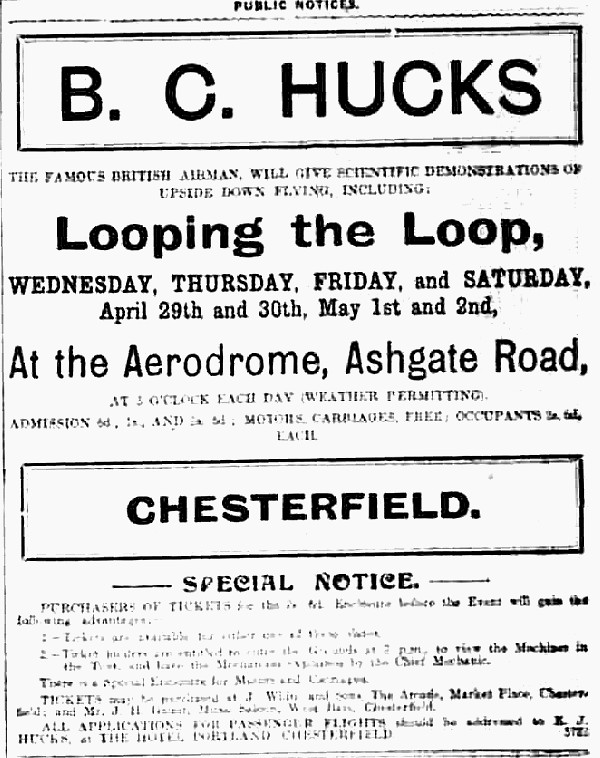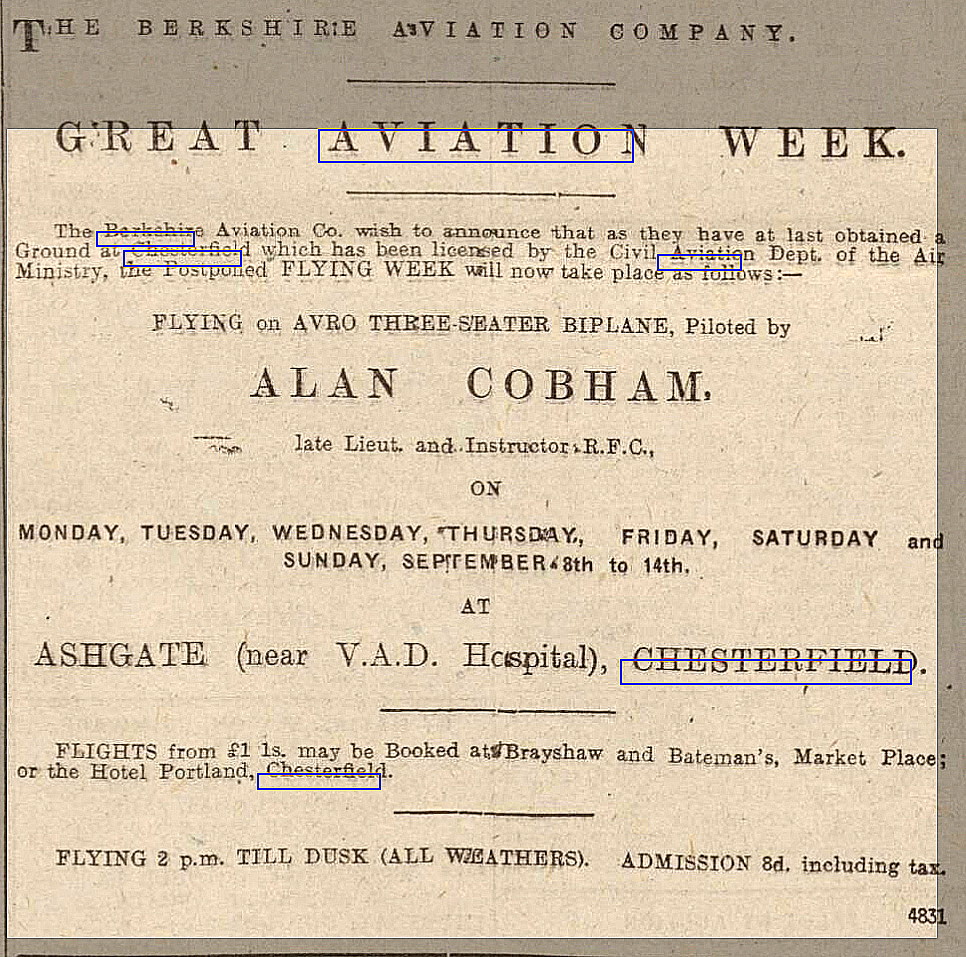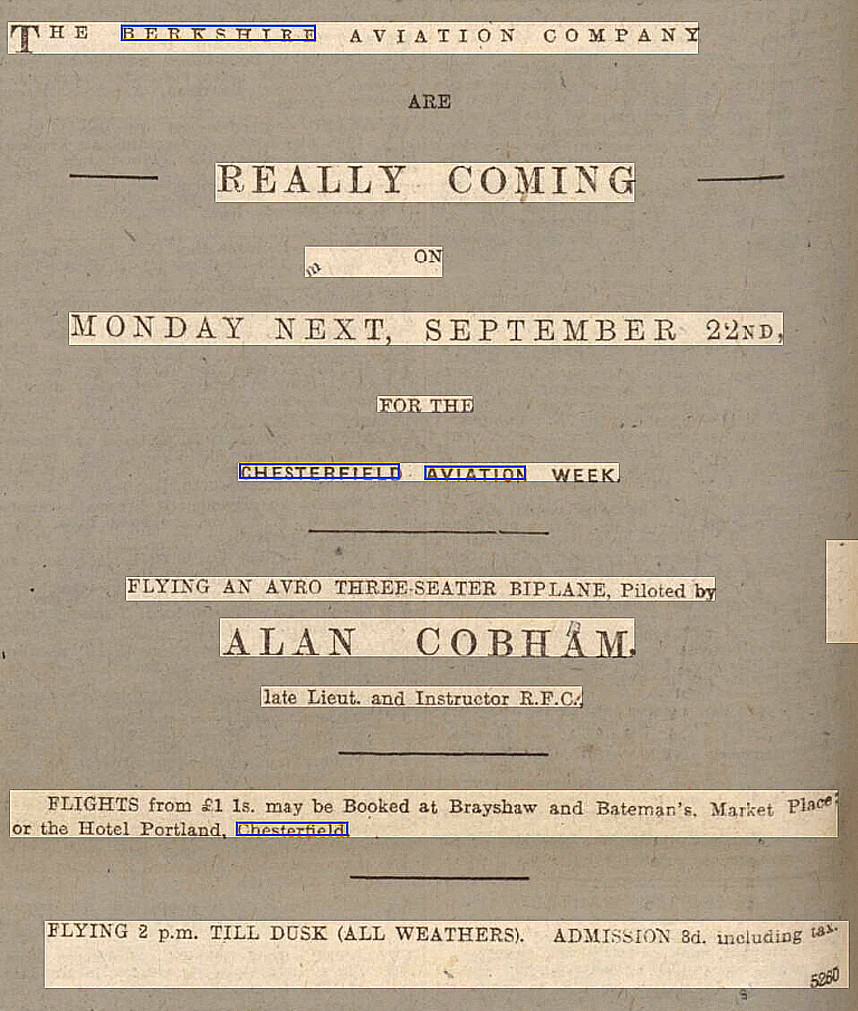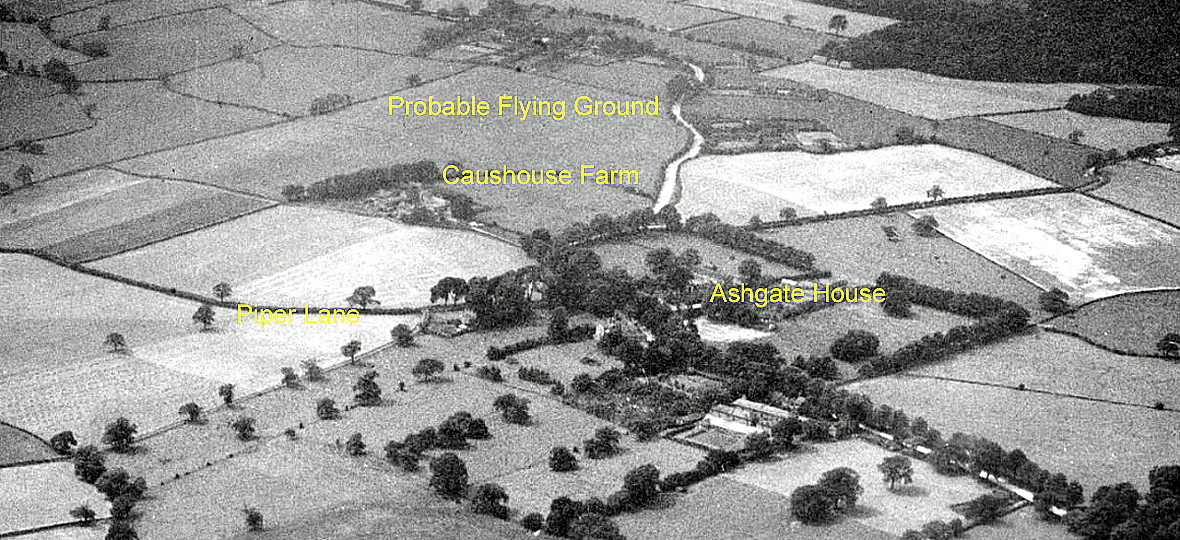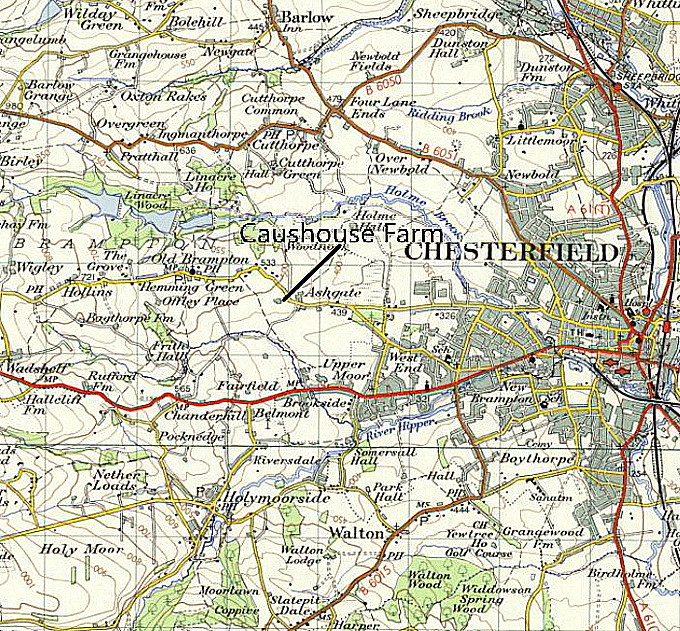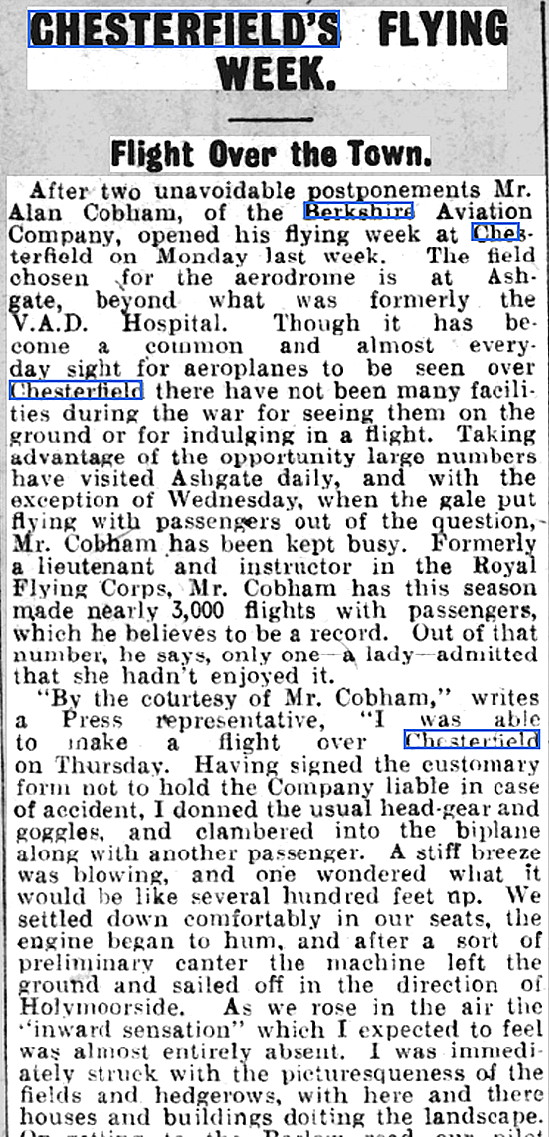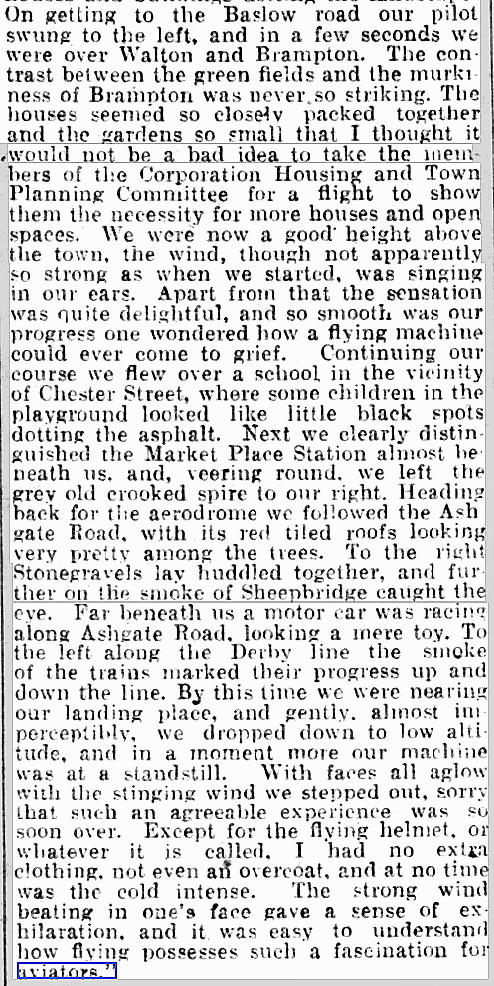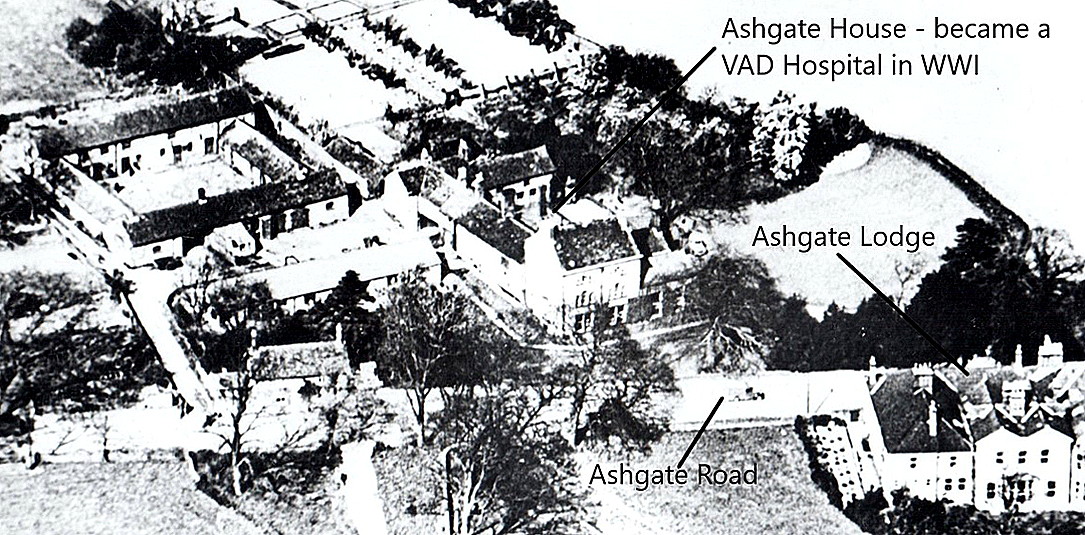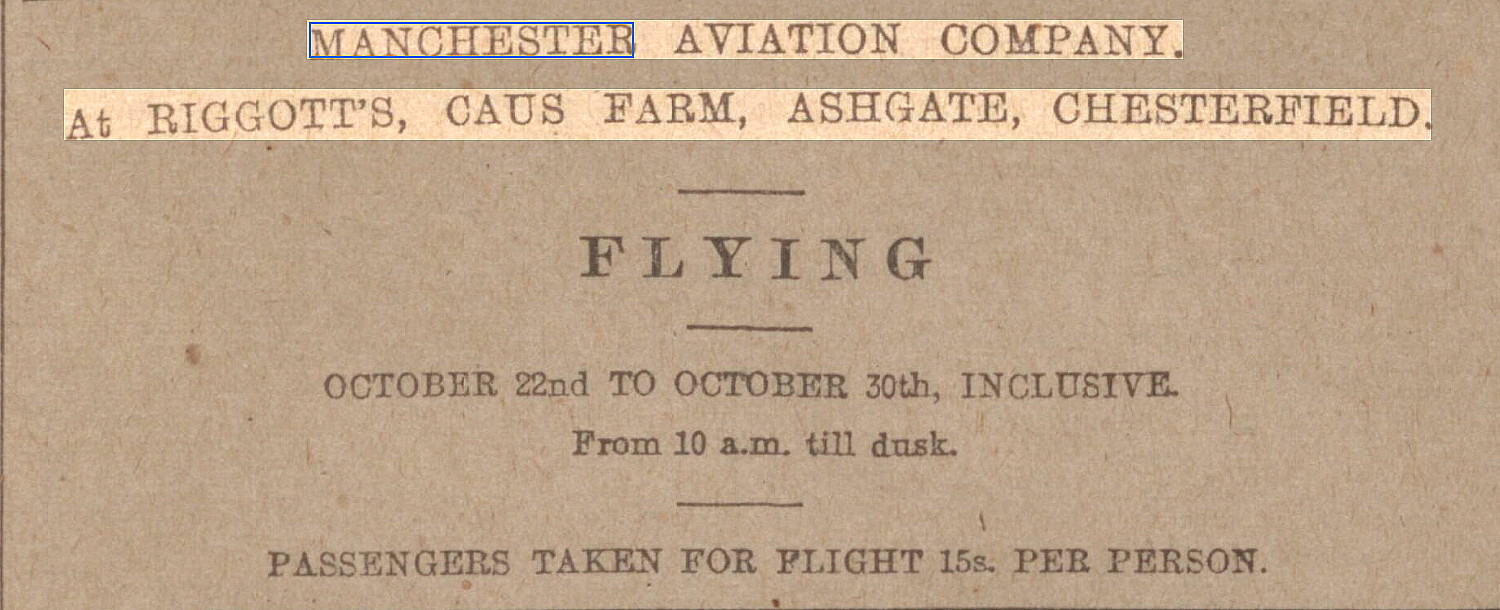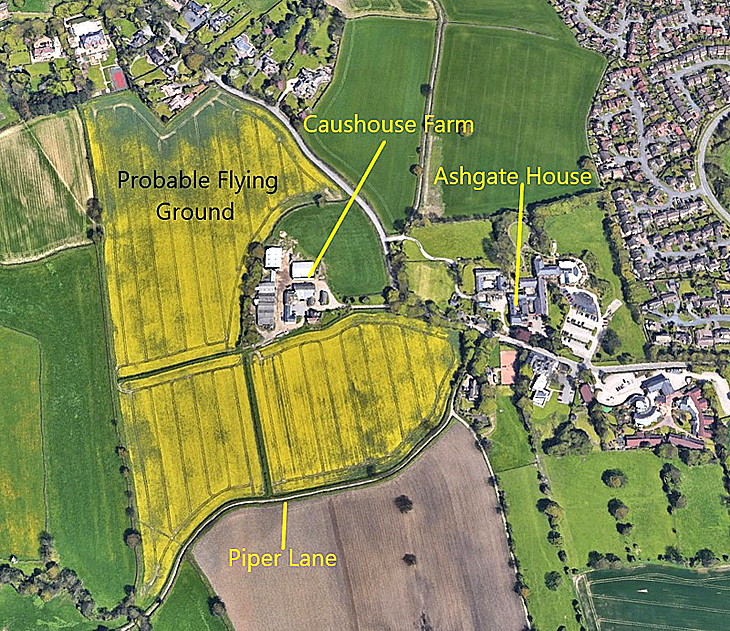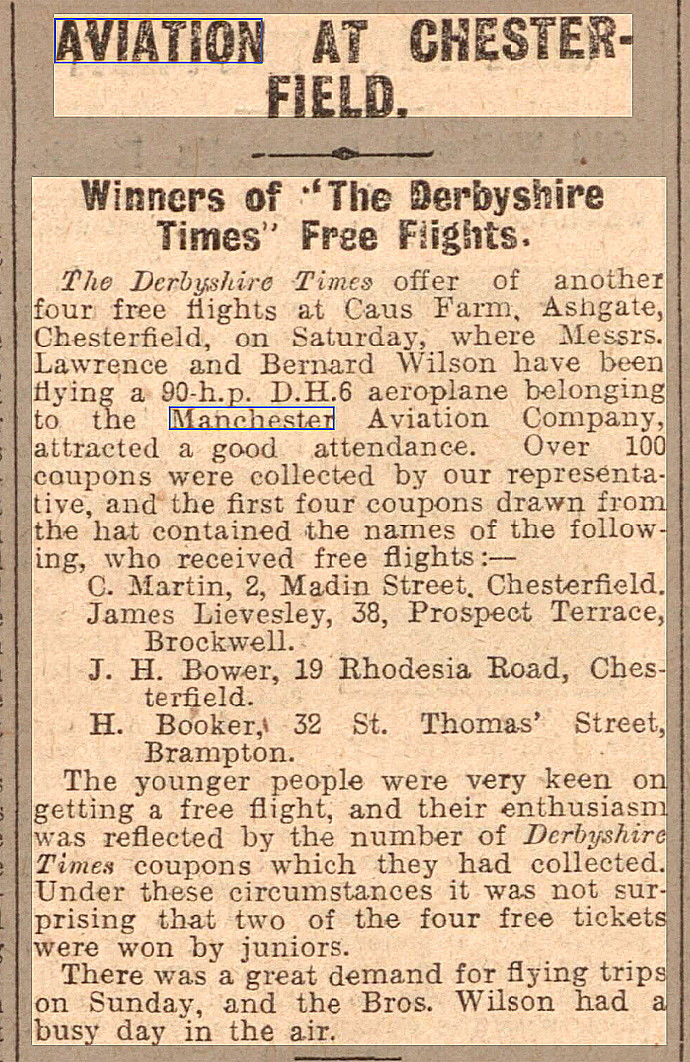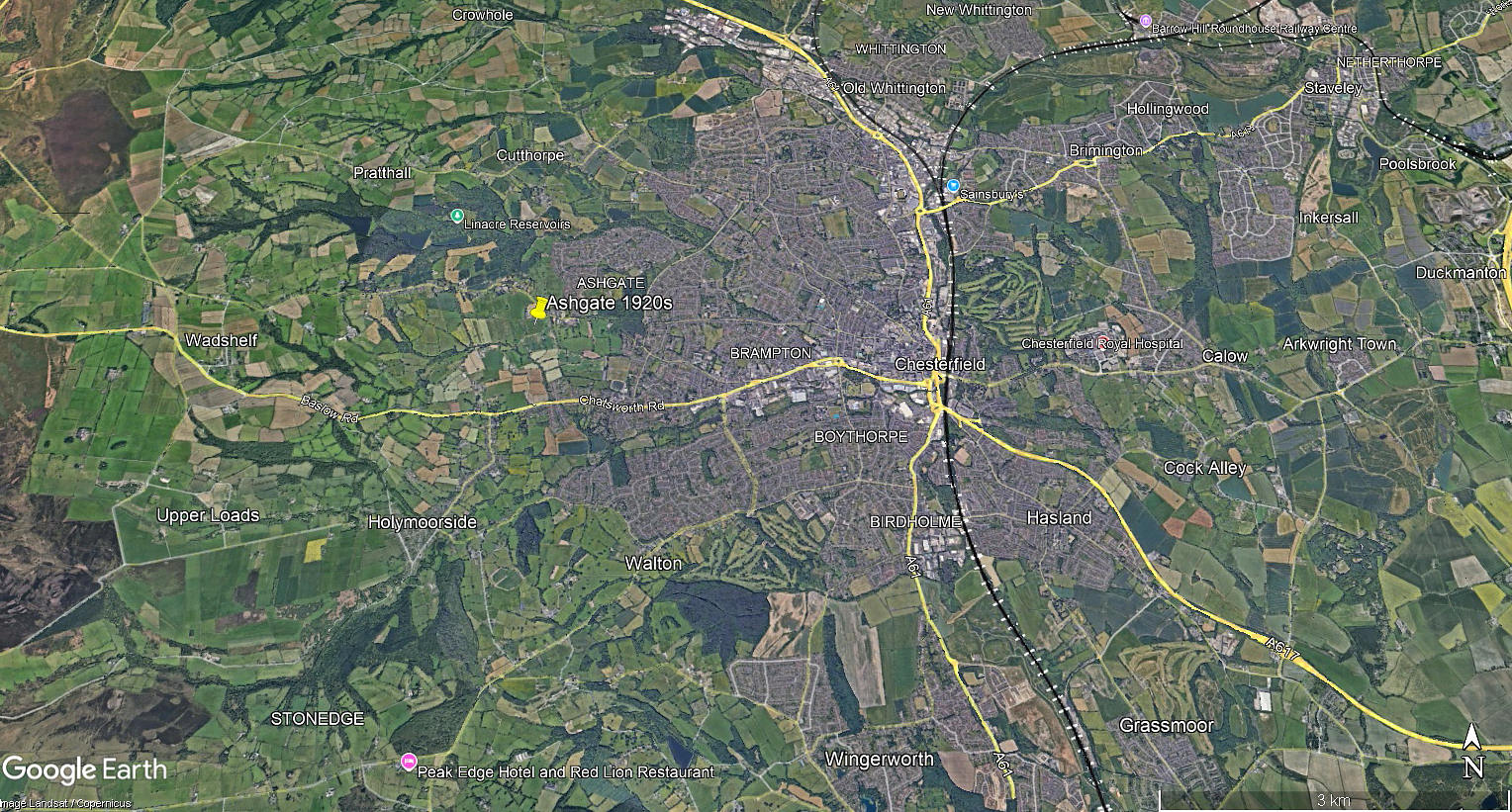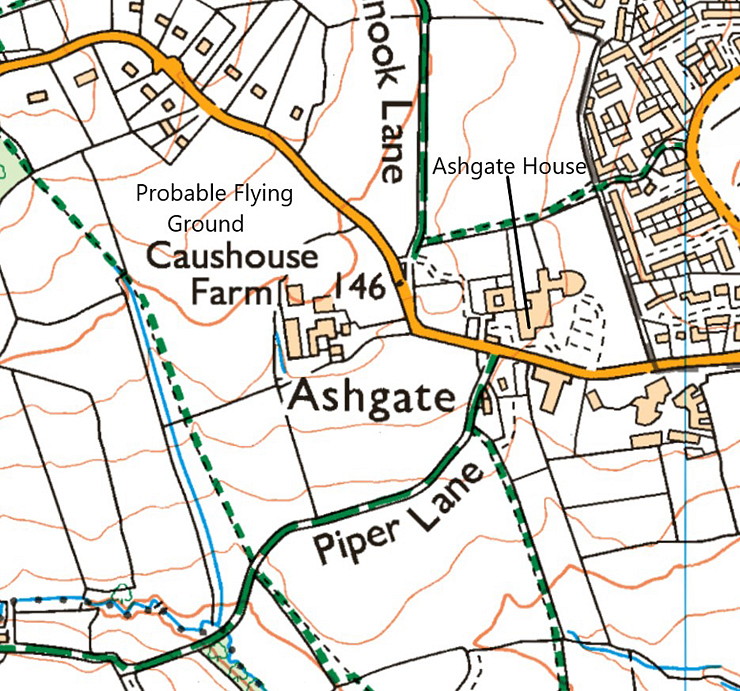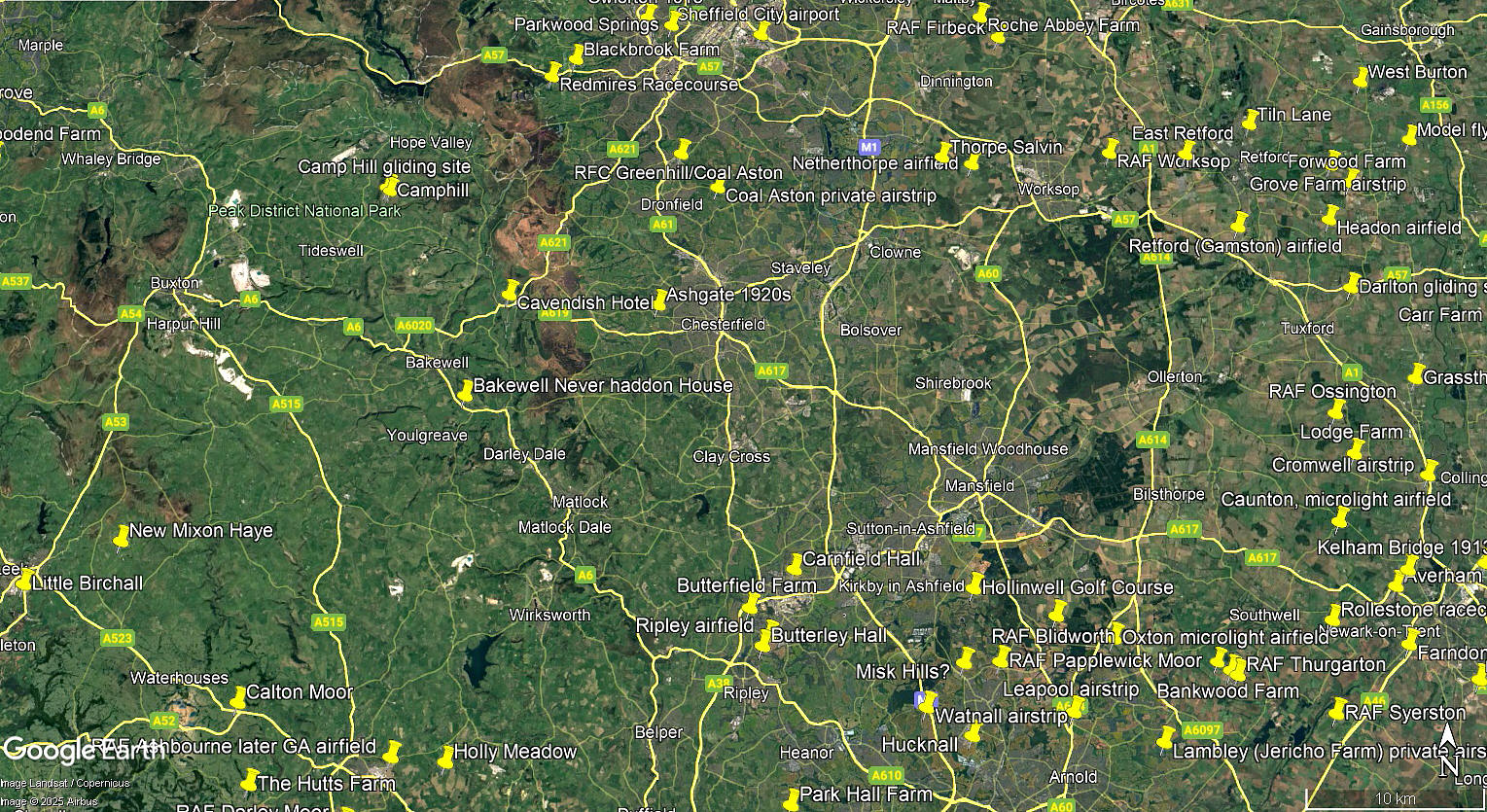Caushouse Farm
CAUSHOUSE FARM: Temporary aerodrome? Aka ASHGATE
Operated by: B C Hucks (1914), Berkshire Aviation Company (1919), Manchester Aviation (1921)
Location: Just SW of Ashgate village, roughly about 2.25nm W to WNW of Chesterfield town centre
Period of operation: Known so far, see above. We do not know to date, (March 2025), if this aerodrome was used, especially just after WW1, for private visits. It seems unlikely? Private flying did not really get going in the UK until the mid 1920s, and the advent of the de Havilland DH60 Moth, which first flew at STAG LANE on the 22nd February 1925, transformed the latent potential.
A MICHAEL T HOLDER GALLERY
We have Mike Holder, a great friend of this 'Guide', to thank for investigating what is available to illustrate this listing.
The advert was published in the Derbyshire Times and Chesterfield Herald on the18th April 1914. It was quite unusual for B C Hucks to stay in one location for four days, often as not givng displays for just a day or two. One reason we might well suppose, was keen local demand for taking passengers up, and of course he quite probably appreciated the revenue he could earn?
THE ARRIVAL OF BERKSHIRE AVIATION IN 1919
This initial visit was, as can be seen below, postponed. Please note that even then, Berkshire Aviation were making a big thing about having Alan Cobham doing the display, without mentioning that he was also part of the management of the firm at that time! This was of course well before he later became a major figure in British aviation history.
This advert was published in the Derbyshire Times on the 6th September 1919. The initial plan being to hold displays etc from the 8th until the 14th September. The Notice One was published in the Sheffield Evening Telegraph on the 8th September - on the same day that flying was planned to commence! In fairness and without much doubt, in the early morning edition.
In those days, way long before any other means of spreading local news became available, local and regional newspapers published three or even four editions every day.
The Notice Two was published in the Derbyshire Times on the 20th September 1919.
Article One, in two parts, was published in the Belper News on the 3rd October 1919,
THE MANCHESTER AVIATION COMPANY APPEAR IN 1921
The advert was published in the Derbyshire Times on the 22nd October 1921, whereas the Notice appeared on the 5th November.
The local area and area views are from my Google Earth © derived database.
NOTES: We do not know for certain that in 1914 B C Hucks used exactly this field. But we expect he did for two main reasons. Firstly because it is the largest and flatest open field in this area. Pilots much prefer flatish fields generally and the contours on maps seems to support this idea. Plus of course, the second reason, a large field is needed to accommodate large crowds. This latter reason applying in 1919 and 1921 needless to say.
We'd love to hear from you, so please scroll down to leave a comment!
Leave a comment ...
Copyright (c) UK Airfield Guide















